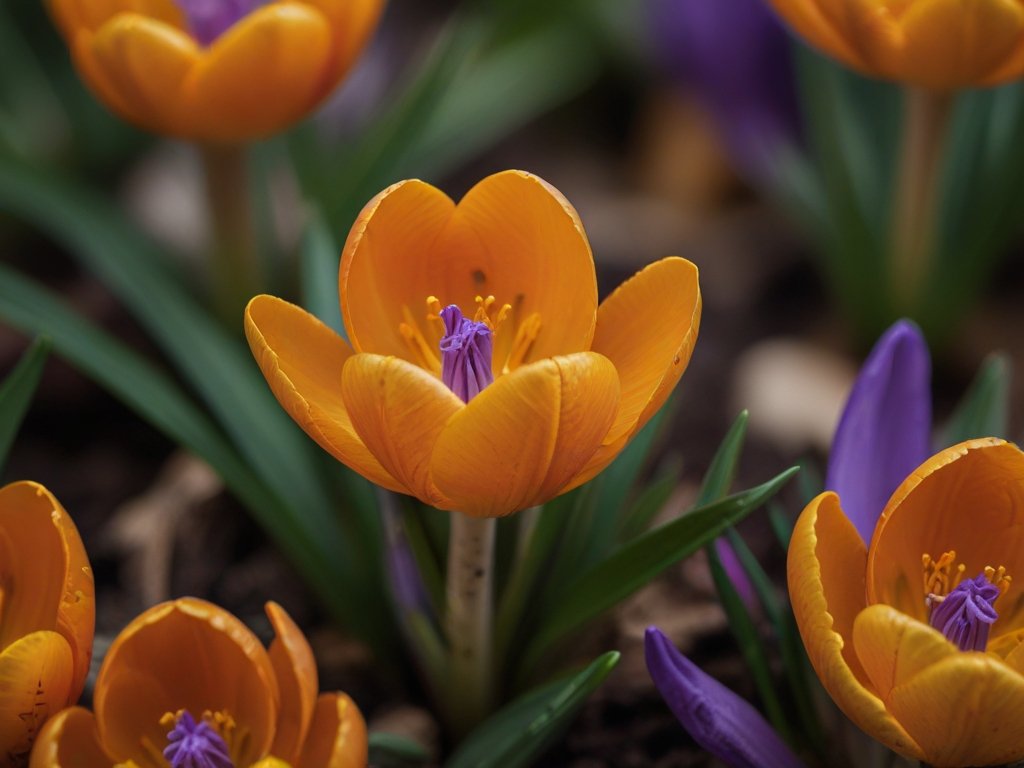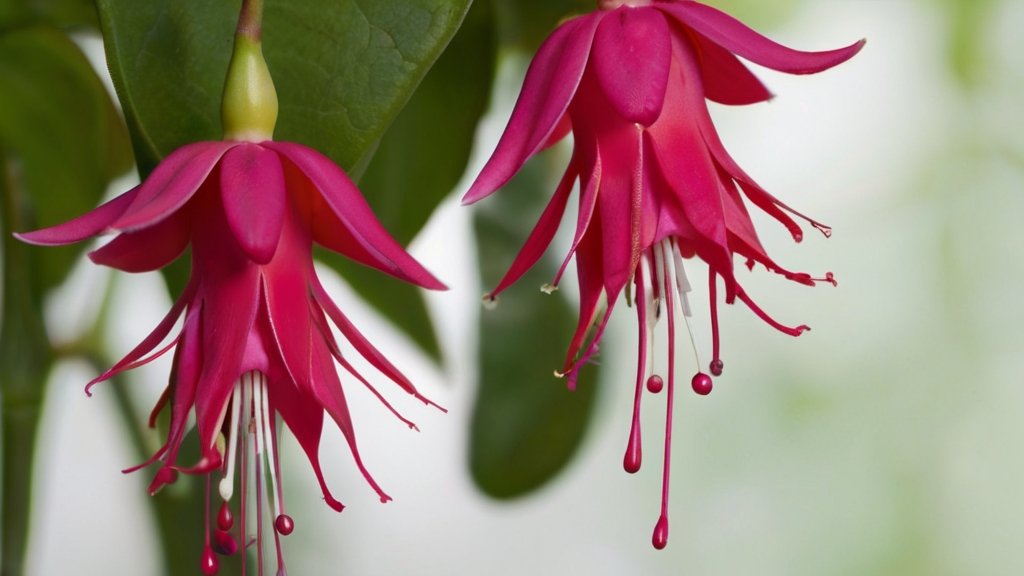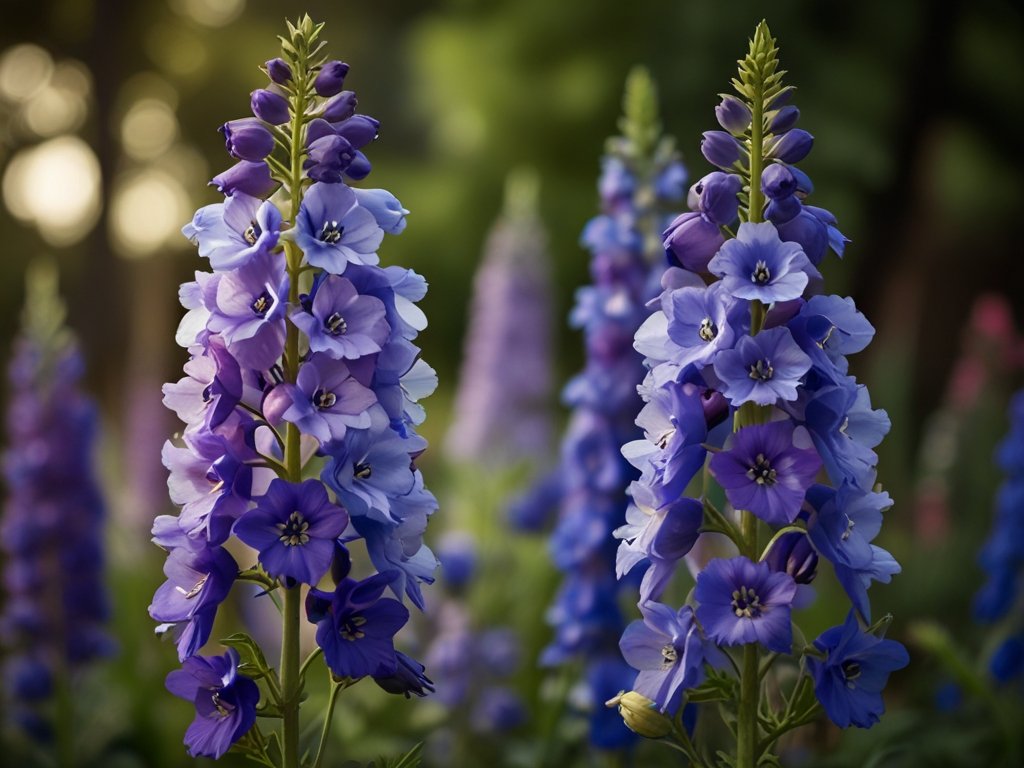Flowers are a wonderful way to add beauty, colour and fragrance to your garden. Whether you want to create a vibrant border, a relaxing patio, or a wildlife-friendly meadow, there is a flower for every situation and style. However, growing flowers in the UK can be challenging, as the climate and soil conditions vary greatly across the country and the seasons. In this article, we will give you some tips on how to design, plant and maintain a flower garden that will thrive and suggest some of the best flowers from early spring through to late summer.
Designing your Flower Bed.
Before you start planting, you need to plan your flower bed carefully. There are several steps to follow starting with –
- Choose the location(s) in your garden. Not all spots are equally good and you will need to consider the amount of sun, shade, wind and moisture that your flower bed will receive. Different flowers have different preferences, so you need to match them to the right spot. For example, roses, lavender, marigolds, geranium and sunflowers love full sun, while hostas, clematis, ferns, foxgloves and hydrangeas prefer partial shade. You also need to think about the view from different angles and how your flower bed will fit in with the rest of your garden.
- Prepare your soil. Once you have chosen where to plant your flowers you should improve your soil to make it ideal for the types you have chosen. Most flowers need well-drained, fertile and loamy soil to grow well. You can improve your soil by adding organic matter, such as compost or horse manure and digging it in thoroughly. You may also need to adjust the pH level of your soil, depending on the flowers you want to grow. It is easy to test your soil with a kit from the local garden centre and adjust it using lime to raise it or sulphur to lower it. The lower the pH of your soil the more acidic it is. Some flowers, such as rhododendrons, azaleas and heathers, need acidic soil, while others, such as delphiniums, lupins and sweet peas, prefer alkaline soil.
- Select your flowers. The best part of designing your flower garden is to choose the types you want to grow. You will need to consider the colours, shapes, sized and scents you like best as well as the times of year they will flower. You can use a colour wheel to help you create harmonious or contrasting combinations, and a height chart to arrange your flowers from tall to short. You can also group your flowers by their flowering time, to ensure a continuous display throughout the year. For example, you can plant bulbs, such as daffodils, tulips and crocuses, for spring, annuals, such as marigolds, poppies and dahlias for summer, and perennials, such as asters, fuchsias and sedums, for autumn.
- Arrange your plants. If you are not planting all your flowers at one time you can just plan out on paper how you intend to arrange them but if you have them there in pots you can lay out your plants on the surface of the soil, to see how they look together and move them around until you are happy how you wish them to be. You should aim for a balanced and natural-looking arrangement, with enough space between the plants to allow them to grow and spread.
How to plant and maintain your flower bed.
Once you have designed your flower bed, you need to plant and care for your flowers properly. Once again there are several steps to consider –
- Firstly, you need to plant at the right time. The best time to plant your flowers depends on their type and the weather conditions. Generally, spring and autumn are good seasons to plant most flowers, as the soil is moist and warm enough for the roots to establish. However, some flowers, such as hardy annuals, can be sown directly in the ground in late summer or early autumn, while others, such as tender perennials, need to be planted in late spring or early summer, once the risk of frost has passed. After planting you can add some mulch, such as bark, gravel or straw, around your plants, to help retain moisture, suppress weeds and enhance the appearance of your flower bed.
- Water regularly. Watering is essential for the survival and growth of your flowers, especially when they are young or in pots. You should water your flower bed deeply and thoroughly, rather than lightly and frequently, to encourage deep root development and drought tolerance. You should also water in the morning or evening, rather than in the middle of the day, to avoid evaporation and scorching. The amount and frequency of watering depend on the type of flower, the size of the plant, the soil condition and the weather. You can check the soil moisture by feeling it with your finger, and water when it feels dry to the touch.
- Feed occasionally. Feeding your flower bed with a balanced fertilizer can help boost the health, growth and flowering of your plants. You should feed your flower bed once or twice a year, depending on the type of flower and the soil quality. When using a fertilizer, you should always follow the instructions on the label. Avoid overfeeding, as this can cause excessive leaf growth and reduced flowering, as well as damaging the soil and the environment.
- Pruning. You should prune regularly to improve the shape and size of your plants as well as maintaining their health by removing dead, diseased or damaged parts which will make them more susceptible to diseases or pests. The exact timing of pruning will depend on the reason for it and the type of plant involved. For example, you can prune spring-flowering shrubs, such as forsythia and lilac once they have finished blooming, to encourage new growth and flowering for the next year. You can also prune summer-flowering perennials, such as salvia, geranium and penstemon, in late winter or early spring, to remove old stems and tidy up the plants. You may also deadhead faded flowers, which is cutting off the spent blooms, to prolong the flowering season and prevent self-seeding. The timing of that will purely depend on when those plants flower.
Flowers For Spring.
As Winter ends and we move into Spring the first flowers start to appear. There are many flowers that bloom in spring, adding colour and interest to dull areas of your garden. Some of our favourite springtime flowers include-
- Crocus. Probably the first to appear even before Spring starts the crocus is a small plant that has relatively large flowers which may be white, yellow, orange or purple. They grow well in a well-drained soil with partial or full sun. easy to grow and quite hardy the first crocus is a welcome sight after a miserable winter.
- Daffodil. Daffodils are probably one of the best-known flowers we have in our gardens. They are grown from bulbs and produce trumpet shaped flowers most commonly in shades of yellow, but also in white, orange, or pink, with single or double petals. Daffodil prefers well-drained, fertile and slightly acidic soil, and full sun or partial shade. It is ideal for planting in borders or tubs.
- Bluebell. This is a perennial plant that produces nodding bells of blue, purple, pink or white flowers, on slender stems. Bluebell prefers moist, well-drained soil, and full or partial shade. It is ideal for planting in woodland areas, under trees or shrubs. Bluebell attracts bees, butterflies and birds and has a delicate and sweet scent.
- Primrose. Another perennial plant that produces clusters of delicate flowers in various colours, such as yellow, pink, purple and white. Primrose prefers moist, well-drained and slightly acidic soil along with partial shade. It is ideal for planting under trees or shrubs, or along pathways. Primrose is a good choice to help attract bees and butterflies.
- Hyacinth. Hyacinth is a bulbous plant that produces dense spikes of fragrant flowers in shades of blue, purple, pink, red, white and yellow. Hyacinth prefers well-drained, fertile soil and full sun. It is ideal for planting in borders, containers or pots. Please note that Hyacinth bulbs contain calcium oxalate crystals that commonly cause skin irritation if handled without gloves.


Flowers For Summer.
As the Spring passes and the first wave of flowers fade, we soon have plenty more ready to come to life and brighten our gardens. In Summer we can choose from so many glorious types and colours-
- Lavender. Lavender is a fragrant and beautiful herb that produces purple, pink or white flowers in early to mid-summer. It likes well-drained, sandy or gravelly soil, and full sun. It is drought-tolerant and attracts bees and butterflies in large numbers. Lavender is perfect for planting in borders, containers, herb gardens or even as a low hedge.
- Lupine. Lupine or lupin is a striking plant from the legume family that produces tall spikes of pea-like flowers in various colours, such as blue, purple, pink, yellow, red and white, in early to mid-summer. Lupine likes moist, well-drained, slightly acidic soil, and does best in full sun. It is a nitrogen-fixing plant that enriches the soil and attracts pollinators. Lupine is suitable for planting in borders and fits in well in both cottage gardens and wildflower gardens.
- Delphinium. Delphinium is a majestic plant that produces tall spires of star-shaped flowers in shades of blue, purple, pink, white and yellow, in early to mid-summer. They do best in rich, moist, well-drained, slightly alkaline soil, and full sun. They are particularly vulnerable to damage from slugs and snails. They are a perennial but can die if the ground they are in gets waterlogged during the winter.
- Gladiolus. The gladioli which are also known as the sword lily is a tall and elegant plant that grows to over a metre tall. It bears spikes of brightly coloured flowers in a range of colours, from white, pink, red, yellow, orange and purple. The normally flower between June and July and do best in a well-drained moist soil in a sunny position.
- Geraniums. Geraniums are one of the most popular garden flowers in UK gardens. They come in a wide range of colours, from white, pink, red, purple and orange. Geraniums usually bloom in May and June but can do up to October so it’s possible you can enjoy them all Summer, depending on the variety and the weather. They prefer well-drained soil and full sun or partial shade and are ideal for pots, hanging baskets and borders. Geraniums are very popular with bees and also attract butterflies.


Flowers for Late Summer and Autumn.
Whilst most flowers will have bloomed by mid-summer there are plenty of choices and varieties that will flower later and into Autumn. These include-
- Aster. Aster is a perennial plant that produces daisy-like flowers in shades of blue, purple, pink, white and yellow, with a yellow centre. They prefer well-drained fertile soil, and full sun or partial shade. It is ideal for planting in borders or containers. They usually flower between late July and October.
- Hibiscus. Hibiscus is a shrub that produces exotic and flamboyant flowers in various colours, such as red, pink, purple, white and yellow. It prefers well-drained, fertile and slightly acidic soil, and full sun or partial shade. It usually flowers from August and will last well into October. A wonderful addition to your garden that can be grown in borders or in a container.
- Fuchsia. Fuchsia’s produce delicate and pendulous flowers in various colours, such as pink, purple, red or white. They prefer moist, well-drained and fertile soil along with partial shade or full sun depending on the variety. It is an ideal plant for hanging baskets, containers or garden borders. They bloom from mid-summer to October in the UK often lasting until the first notable frost.
- Sedum. Sedum is a low-growing succulent perennial that produces clusters of star-shaped flowers in shades of yellow, pink, red, white or purple. Sedum prefers well-drained soil and full sun and can tolerate drought and poor soil conditions. It is perfect for planting in rock gardens, containers or borders. Sedum flowers from August to November in the UK and is a great choice for some Autumn colour.



Flowers are a great way to enhance the beauty and enjoyment of your garden. By following some simple steps, you can design, plant and maintain a flower garden that will thrive in the UK. Your choices of flowers for Spring, Summer and Autumn far exceed the few we have described here and you can visit any garden centre or nursery for expert advice and suggestions on what will suit you best. Whatever the plan or vision is for your garden a suitable flower will exist. We hope this article has inspired you to grow your own stunning flower garden. Happy gardening.
